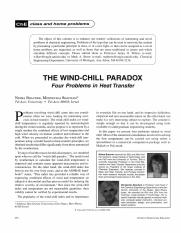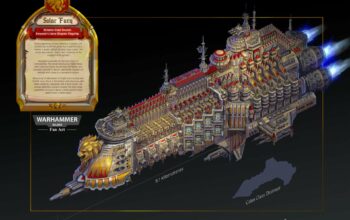In the realm of thermodynamics, the juxtaposition of heat and cold often unveils a seemingly paradoxical phenomenon: the ability of fire to induce a chilling sensation. This remarkable interplay, emblematic of what can be termed the “Heat to Chill” paradox, captivates both scientific inquiry and everyday observation. At its core, this paradox encompasses the intricate mechanisms of heat transfer, the psychological reactions to temperature changes, and the fundamental principles governing thermal energy. This article endeavors to elucidate these dimensions, thereby addressing a common observation while hinting at the deeper, often underappreciated reasons for fascination.
The artistic portrayal of a warm bonfire can evoke feelings of comfort and camaraderie, yet the moment one ventures too close, an unusual sensation manifests—one that oscillates between warmth and an inexplicable chill. This duality invites a closer examination of the scientific basis behind this perplexing encounter. This phenomenon can be attributed to the physics of heat transfer, specifically through conduction, convection, and radiation. Each mechanism plays a pivotal role in mediating the exchange of thermal energy between the fire and the surrounding environment.
Conduction, the direct transfer of heat through materials, occurs when a body at a higher temperature (the fire) comes into contact with a cooler one (the skin). When one approaches a flame, the skin is bombarded with a surge of thermal energy, consequently elevating the surface temperature. However, this immediate warmth can be deceptive. The sweat produced as a result of this intense heat can lead to a cooling effect as it rapidly evaporates from the skin’s surface. This evaporative cooling mechanism actively removes heat energy, creating a paradoxical sensation of chilliness, even in the presence of fire. The juxtaposition of heat influx and sweat evaporation establishes a unique dynamic, where the simultaneous activities of thermal gain and loss create a sensory discord.
As we delve deeper, consideration must be given to convection—the essential process by which heat is transferred through the movement of fluids (liquids and gases). In the immediate vicinity of a fire, the air warms up and becomes less dense, leading to a rise, while cooler air moves in to replace it. This convective cycle further shapes the thermal landscape, engendering a gradient that can produce localized microclimates. When one stands close to a fire, the heat generated creates an updraft that may cause surrounding ambient air to feel cooler as one’s body moves through these contrasting temperature zones. Thus, individuals may experience both warming from direct radiation and a perceivable chill from the cooler air circulating around them, contributing to the bewildering nature of this paradox.
Furthermore, we must consider the role of radiation in this thermal interplay. All objects emit thermal radiation proportional to their temperature. The fire, serving as a localized source of radiant energy, emits infrared radiation that can warm the surrounding space. When this radiation interacts with a heat-absorbing surface—such as human skin—it induces thermal excitation, generating warmth. However, upon stepping away from this radiant source, the rapid loss of warmth, coupled with the lingering effect of evaporative cooling, signals the initiation of a chilling sensation. Thus, the radiant heat that elicits warmth is but a transient phenomenon, capable of triggering a stark contrast once removed from the source.
This intricate dance of heat and chill possesses not only physical implications but also profound psychological ramifications. The interplay of temperature elicits visceral responses, challenging the binary perceptions of warmth and cold. As one experiences the atmospheric shift encountered near a heat source, the psychological frameworks established by previous experiences come into play. The juxtaposition of warmth and cooling leads to a fascinating exploration of what psychologists term “thermal comfort”—a concept influenced by personal perceptions shaped by context, expectations, and even cultural backgrounds.
The fascination with the paradox of cooling with fire can also be attributed to evolutionary biology. Early humans relied upon fire for warmth, protection, and cooking. The interactions experienced in response to fire thus bore significant implications for survival. The ability to discern minute fluctuations in temperature would have bolstered an individual’s capability to adapt to their environment, reinforcing the primal instincts that underline our interaction with thermal elements today. Indeed, our ancestral relationship with fire primes us to be acutely aware of the thermal dynamics at play during our encounters with it.
Philosophically, this paradox also raises larger questions about human experience and perception. How do sensations of comfort and discomfort coexist within a singular moment? The ‘Heat to Chill’ paradox invites contemplation on dualities present in nature and our existence. It serves as a metaphor for life itself—where moments of warmth are often interspersed with moments of cold, and where juxtaposition can reveal deeper truths. Thus, while the immediate sensation may originate from a purely physical phenomenon, the implications resonate far beyond mere thermodynamics, inviting profound introspection and inquiry.
In conclusion, the enigmatic juxtaposition of heat and chill exemplified by the paradox of cooling with fire underscores the complex interplay of thermodynamic principles, human psychology, and cultural history. Understanding this phenomenon enriches our appreciation for the delicate equilibria present in our environment and in our cognition. As we stand before the flickering flames, we are reminded of the elemental forces at play, urging us to explore, question, and embrace the dichotomies that shape our experience of the world.












